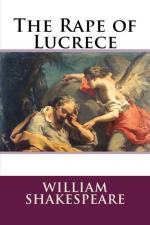|
This section contains 8,783 words (approx. 30 pages at 300 words per page) |

|
SOURCE: "Iconography and Rhetoric in Shakespeare's Lucrece," in Shakespeare Studies: An Annual Gathering of Research, Criticism, and Reviews, Vol. XIV, 1981, pp. 1-21.
In the following essay, Bowers argues that Shakespeare demonstrates Lucrece's virtue by employing rhetorical techniques and an omniscient narrator which emphasizes "the violence of rape and Lucrece's consequential disturbance of mind and ultimate despair. "
Lucrece has not fared well at the hands of critics. Though obviously an admired and popular work when it was published in no fewer than six editions during Shakespeare's lifetime, it was considered to be insufficiently dramatic by Romantic critics, and then for most of the last two centuries the poem was judged to be interesting only up to the rape scene itself, after which Lucrece drones on, committing rhetorical suicide long before her actual death: "The greatest weakness of Shakespeare's Lucrece is therefore her remorseless eloquence. In Ovid Lucrece does not...
|
This section contains 8,783 words (approx. 30 pages at 300 words per page) |

|


